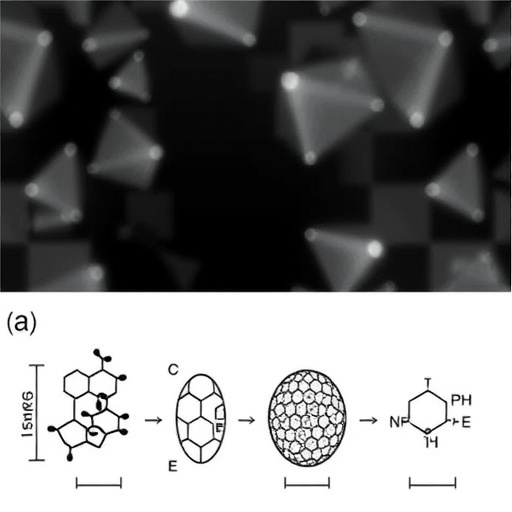In the ongoing quest to find effective solutions for water purification, a recent study led by Valenzuela et al. showcases an innovative approach that integrates graphene oxide with metal-organic frameworks (MOFs). This research specifically addresses the concerns surrounding the persistent contaminants losartan, bisphenol A (BPA), and triclosan in aqueous environments. As communities around the world grapple with water quality issues, this study shines a light on advanced materials capable of addressing these challenges.
The widespread use of pharmaceuticals and personal care products has resulted in these substances permeating various water bodies, leading to significant ecological and health risks. Losartan, a medication for hypertension, bisphenol A, a chemical commonly found in plastics, and triclosan, an antibacterial agent, are prime examples of pollutants that resist standard water treatment processes. They are not only prevalent but also demonstrate harmful effects on aquatic life and potential repercussions for human health. The need for efficient and reliable removal methods cannot be overstated.
In their innovative approach, the authors employ a composite material that combines graphene oxide with a zinc-based MOF. Graphene oxide’s unique properties, characterized by a large surface area and high reactivity, make it a powerful platform for capturing contaminants. When enhanced with the MOF, the composite exhibits remarkable adsorption capabilities, promising a more efficient solution for removing hazardous substances from water sources.
This research explores the underlying mechanisms behind the adsorptive process, detailing how the combined structure of the graphene oxide-enhanced MOF-Zn composite interacts with the target pollutants. The authors delve into the chemical interactions at play, including van der Waals forces and pi-pi stacking, which effectively trap these harmful substances. Understanding these interactions is crucial for optimizing the material’s configuration and maximizing its effectiveness.
Experimental trials conducted by the research team reveal substantial reductions in concentrations of losartan, BPA, and triclosan in synthetic wastewater samples. This outcome is not only significant in terms of quantitative data but also highlights the potential applications of this technology in real-world scenarios. The material’s ability to perform under varying pH levels and temperatures suggests its robustness and adaptability, necessary features for practical implementations in diverse environments.
Furthermore, the implications of this study extend beyond just laboratory testing. The potential for scaling this technology presents exciting opportunities for municipal water treatment facilities to enhance their purification systems. As urban areas worldwide strive to maintain clean water supplies amidst growing populations, integrating advanced materials like the one discussed in this study can pave the way for improved public health outcomes.
In addition to the direct benefits of pollutant removal, the development of such materials also invites discussion on resource recovery. The use of composites that can be recycled or repurposed post-use contributes to a more sustainable approach to water management. Future research could further explore how the recovered contaminants from these processes can be treated or utilized in other applications, closing the loop on water pollution management.
The authors emphasize the importance of ongoing research to refine the synthesis and effectiveness of their composite. Innovations in material science continue to emerge, offering pathways for engineers and environmental scientists to collaborate in developing solutions to complex problems like water pollution. The study presents not just a single solution but a framework for thinking about how composite materials can be engineered to meet the specific challenges posed by various contaminants.
A key element of this research is the establishment of a benchmark for future studies in the field. By providing a detailed characterization of the composite’s performance, Valenzuela et al. have laid down essential metrics for measuring the efficiency of adsorptive materials. This endeavour encourages further investigation into alternative configurations and novel materials that could enhance pollutant capture even more effectively.
As awareness grows regarding the environmental impacts of chemical pollutants, the academic community is increasingly called upon to develop actionable solutions. The advancement of the graphene oxide-enhanced MOF-Zn composite demonstrates an essential step towards fulfilling this role. The engagement between science and public policy will be crucial as communities look to implement new technologies and strategies for water safety management.
Consequently, the findings of this research could influence regulatory frameworks governing water quality standards, prompting authorities to consider more stringent measures against persistent pollutants. The multifaceted nature of chemical contaminant interactions warrants a deeper investigation, one that blends material science, environmental chemistry, and policy reform to ensure the safety of our water resources now and for future generations.
Ultimately, the emergence of graphene oxide-enhanced composites exemplifies the innovation needed to tackle pressing environmental issues. By continuing to push the boundaries of material science, researchers can unlock new capabilities that empower them to confront the daunting challenges of modern water quality management. This study marks just a step in that direction, with significant implications for the future of water purification technologies.
In conclusion, the interplay of technology and sustainability is more vivid than ever in the face of environmental challenges. The intricate relationship between pollutants and advanced materials, as illustrated in Valenzuela et al.’s research, represents a hopeful narrative in the sustainability discourse. As these methodologies are refined and adopted more widely, the call to action for impactful science will only grow louder.
Subject of Research: Adsorptive removal of pharmaceuticals and personal care products (losartan, bisphenol A, and triclosan) from aqueous solutions using advanced materials.
Article Title: Adsorptive removal of losartan, bisphenol A, and triclosan in aqueous solutions using a graphene oxide-enhanced MOF-Zn composite.
Article References: Valenzuela, I.E., Valencia, S., Muñoz-Acevedo, J.C. et al. Adsorptive removal of losartan, bisphenol A, and triclosan in aqueous solutions using a graphene oxide-enhanced MOF-Zn composite. Environ Sci Pollut Res (2025). https://doi.org/10.1007/s11356-025-36961-9
Image Credits: AI Generated
DOI: https://doi.org/10.1007/s11356-025-36961-9
Keywords: graphene oxide, metal-organic framework, water purification, adsorptive removal, environmental contaminants, losartan, bisphenol A, triclosan, sustainable materials.




